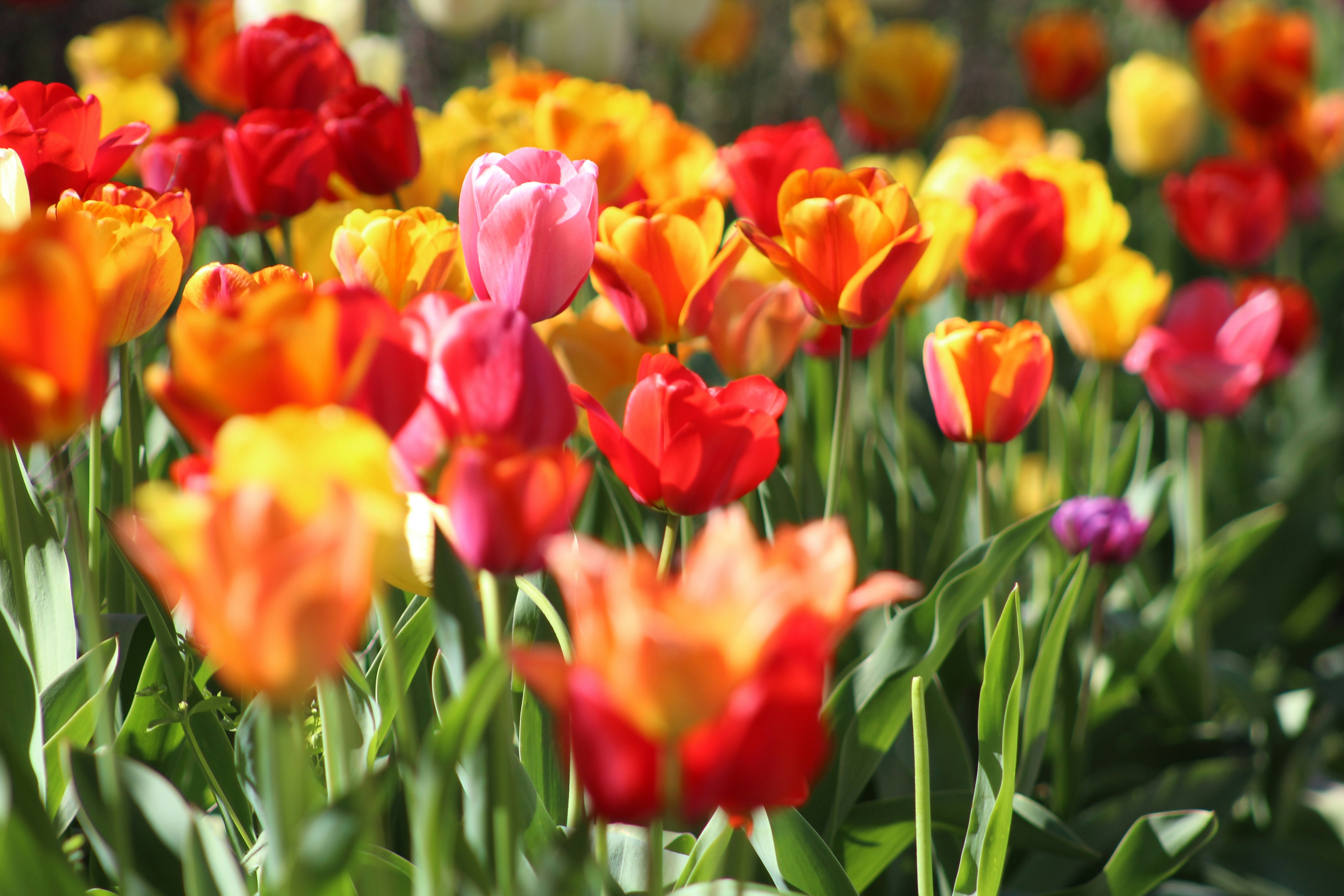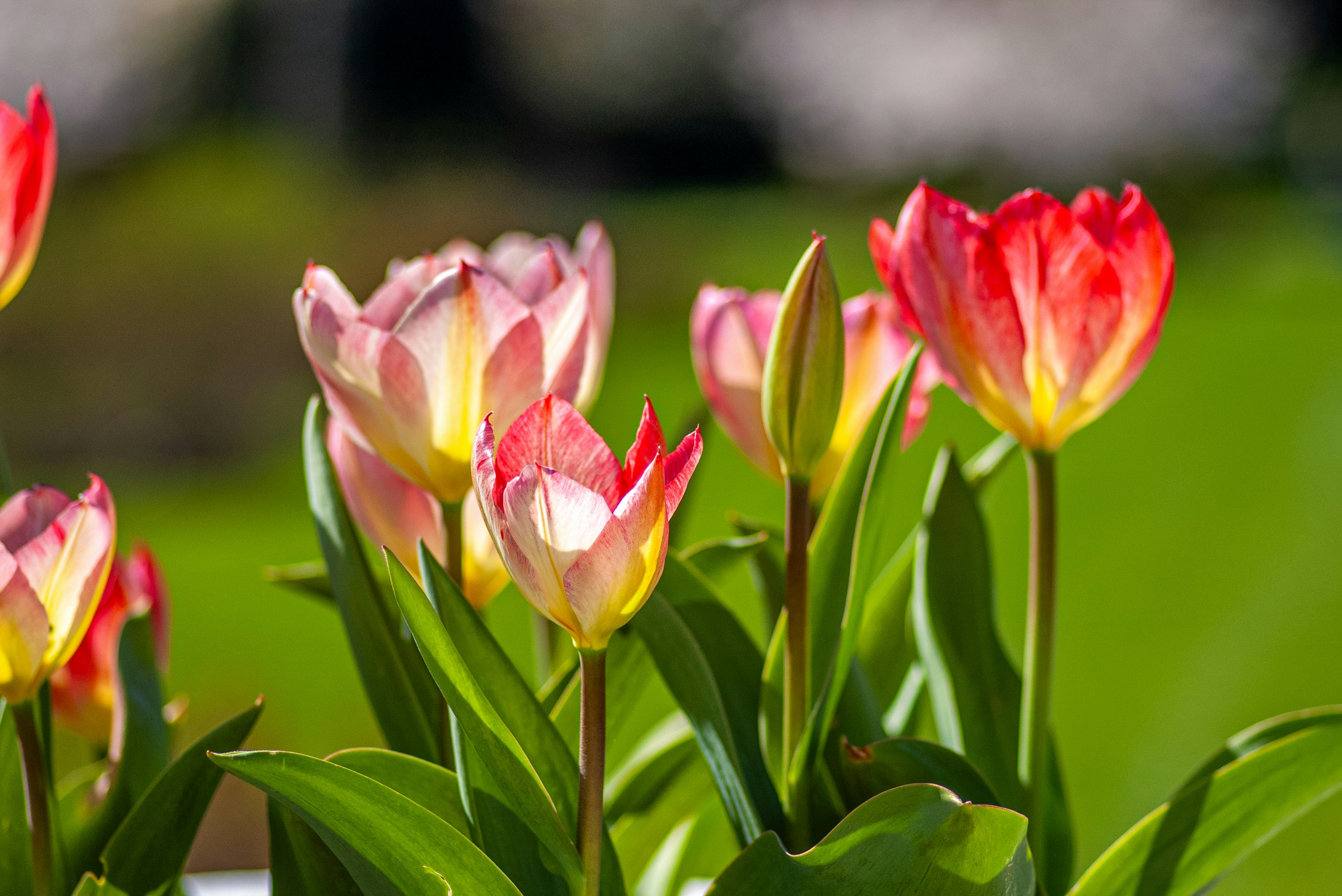Tulips

Want to learn more about Tulip Trivia
Get individual care schedule and reminders for your plant with our app Planta. Never kill a plant again!
Tulip Trivia
Tulips offer a diverse selection of varieties. Some are short while others are tall with long flower stalks. They come in various colors like red, orange, peach, pink, white, green, yellow, and purple, each with unique patterns and petal shapes. With such variety, there's always a couple of tulip varieties to suit your taste and preference.
Origin
Tulips, which belong to the genus Tulipa, grow naturally in western Asia, northern Africa, and southern Europe. People have been growing some of these species for a really long time, starting back in Persia. When they made their way to western Europe in the 16th century, people started cross-breeding and carefully selecting the best ones to create new varieties. Now, there are approximately 3000 different registered types of tulips thanks to all that breeding and selection.

Annual Growth Cycle
Tulips evolved their bulbs to withstand dry spells in their natural habitat. In spring, they emerge from bare bulbs, blooming with flowers and making leaves. Once the flowers are done blooming, the plant persists in leaf growth, saving up energy and resources for the upcoming year. This leafy phase extends for one to several months post-flowering, gradually wilting before entering dormancy - usually in mid or late summer. Throughout the dormant phase, lasting until the following spring, the bulb conserves energy until the cycle renews.

Care
Tulips are generally somewhat hardy plants. One very common mistake is to grow it indoors for an extended time - but that's also an easy mistake if you're given potted tulips. They're unfortunately not suitable to be grown in room conditions for any extended time and it will slowly decline in such a setting. Keeping it inside and displaying the flowers indoors for a couple of days is often okay, but after that it's best to move it to cooler temperatures for further growth. When grown in the ground the winter hardiness varies a lot depending on the species or variety, but most are generally rather frost tolerant as long as they're planted in porous and draining soil.
Planting dormant bulbs
For a bulb to grow and bloom well next year, it's crucial to give it a dry and cool resting period lasting a couple of months. They're best planted in fall, and it's also around that time they're sold in stores. Plant them about 2-3 times the bulb's height deep. You can also fertilize it with bone meal or another lime rich fertilizer at the same time. That will help them grow better next season.
During the flowering period in pots
If you've bought a potted tulip it could be good to know that the flowers will usually last for a couple of days to a week or so in room temperature. Keeping the plant in a cooler area can increase the duration of the bloom by a lot. It can be kept at temperatures down to 50°F or +10°C to extend the length of flowering. And remember - keeping the plant indoors is only possible for a very short time, the plant will rather quickly decline in health in such a setting.
After flowering
In order to continue growing the plant, you'll have to keep it in a cooler and bright location free from freezing temperatures to help it continue collecting resources via its leaves for a couple of months. If the risk of freezing temperatures is over in your area you can slowly transition it to a sheltered spot outdoors. Let the plant grow for as long as it can until it starts wilting on its own. After that you can either store it in a pot or plant it in the ground.
Prepare and care throughout the dormancy
If planted in the ground you don't need to do much other than covering the bulb with leaves or other insulating material in late fall. If you keep it in a pot it's best to either temporarily dig down the pot to that the soil line in the pot matches the ground level, or you can store it in an environment protected from most freezing temperatures and rain. When grown in a pot the bulb is much more exposed to the elements throughout the winter months, and not as reliably winter hardy.
Skipping a cooler dormancy is not recommended. It will interfere with both the blooming and the general growth of the plant.
